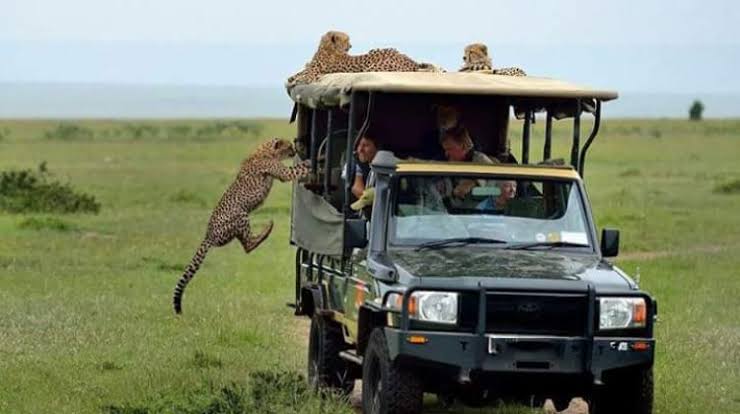Masai Mara, Kenya travel tips
Category
Categories
Popular Articles

Masai Mara, in the heart of Kenya, is a world-renowned safari destination. It’s famous for its incredible wildlife, which include the “Big Five” – lions, leopards, elephants, buffalo, and rhinos – and the Great Migration, where thousands of wildebeest, zebra, and Thomson’s gazelle move to and fro between the Serengeti in Tanzania and Masai Mara in search of fresh grazing land. What truly sets Masai Mara apart is not just the density and diversity of wildlife, but also the close proximity at which you’ll experience them.
**Best Time to Visit**
The ideal time to visit Masai Mara is during the dry season, from late June to October, which coincides with the Great Migration. However, wildlife is abundant throughout the year, making a visit worthwhile in any season. The rainy seasons from November to May should not be dismissed, as they offer unique wildlife experiences and less tourist traffic. A notable event you may want to consider is the Maasai Mara Cultural Festival held annually in December.
**Climate & What to Pack**
Masai Mara has a mild and temperate climate. Daytime temperatures usually settle around 25°C to 30°C, while nighttime temperatures can drop to about 12°C to 15°C. During the rainy season, you can expect short afternoon showers.
Packing essentials include lightweight, light-colored clothing for day safaris, jackets and hats for early morning game drives, sturdy and comfortable footwear, sunblock, insect repellent and safari hats. Binoculars and a good camera are also recommended.
**Getting There**
The nearest major airports are Nairobi’s Jomo Kenyatta International Airport (NBO) and Moi International Airport (MBA) in Mombasa. Both are about a 45-minute flight from Masai Mara. Tour companies often arrange chartered flights right to the reserve.
As for visa requirements, most tourists need a visa to enter Kenya, which can be obtained online or on arrival.
**Getting Around Locally**
Within Masai Mara, game drives with experienced local guides are the best way to move around. These are usually arranged by your accommodation or tour operator. Walking safaris are also possible but must be accompanied by a guide. Driving yourself around is not allowed. Public transport within the reserve is virtually non-existent.
**Safety Tips**
Masai Mara is generally safe. However, it’s always wise to listen to your guide during game drives and respect the animals by maintaining a safe distance and not interrupting their activities. Culturally, polite respect towards the local Maasai people is encouraged. Solo travel is perfectly safe, especially with a reputable tour operator.
**Top Things to Do & See**
Beyond wildlife spotting during game drives, highlights include hot air balloon safaris, visiting a Maasai village, guided nature walks, bird watching, and witnessing the Great Migration.
**Where to Stay**
There are a wide range of accommodation options, from budget camping sites to mid-range lodges and luxury tented camps. Whatever your budget, aim to stay within or near the reserve for easy access to game drives. Notable luxury options include Angama Mara and Mara Serena Safari Lodge, while budget travelers can consider Enchoro Wildlife Camp or Ol Moran Tented Camp.
**Food & Local Cuisine**
International cuisine is widely available at lodges and camps. But for a taste of local food, try dishes like Ugali (maize meal), Nyama Choma (roasted meat), or Sukuma Wiki (Collard Greens).
**Cultural & Practical Tips**
The local currency is the Kenyan Shilling, though US Dollars are accepted mostly everywhere. English and Swahili are the main languages spoken. Tipping is customary but not obligatory. Plugs are type G, the voltage is 240V, and the frequency is 50Hz so you might need a transformer. Wi-Fi, especially in remote areas, can be intermittent.
**Sustainable or Responsible Travel Tips**
When visiting Masai Mara, aim to make a positive impact on the environment and community. Follow the principles of “leave no trace”, keep wildlife disturbance to a minimum, and support local businesses whenever possible. Choose eco-friendly accommodation and organizations that support conservation efforts.
**Personal Travel Tip**
The magic of Masai Mara lies in the simple moments. While the Great Migration or spotting a pride of lions is thrilling, don’t overlook the beauty in a sunrise over the savannah or the grace of a solitary antelope. Embrace every moment and let the Mara enchant you.










